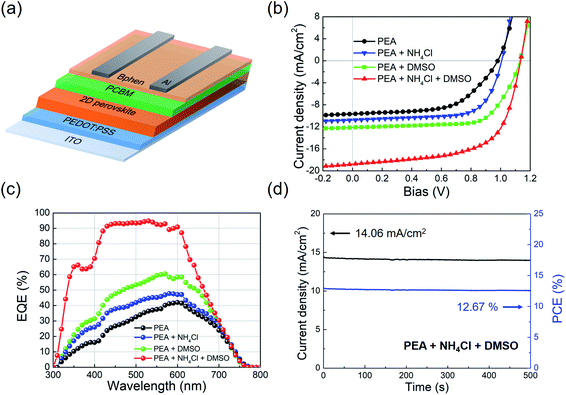 Open Access Article
Open Access ArticleCreative Commons Attribution 3.0 Unported Licence
Correction: Enabling room-temperature processed highly efficient and stable 2D Ruddlesden–Popper perovskite solar cells with eliminated hysteresis by synergistic exploitation of additives and solvents
Shuang
Yu
a,
Yajie
Yan
a,
Yani
Chen
a,
Pavel
Chábera
c,
Kaibo
Zheng
*bc and
Ziqi
Liang
*a
aDepartment of Materials Science, Fudan University, Shanghai 200433, China. E-mail: zqliang@fudan.edu.cn
bDepartment of Chemistry, Technical University of Denmark, DK-2800 Kongens Lyngby, Denmark. E-mail: kzheng@kemi.dtu.dk
cDepartment of Chemical Physics and NanoLund, Lund University, Box 124, Lund, 22100, Sweden
First published on 23rd April 2019
Abstract
Correction for ‘Enabling room-temperature processed highly efficient and stable 2D Ruddlesden–Popper perovskite solar cells with eliminated hysteresis by synergistic exploitation of additives and solvents’ by Shuang Yu et al., J. Mater. Chem. A, 2019, 7, 2015–2021.
The authors regret an error in the legend of Fig. 4c in the published article. A corrected version of Fig. 4 is shown below:
The Royal Society of Chemistry apologises for these errors and any consequent inconvenience to authors and readers.
| This journal is © The Royal Society of Chemistry 2019 |

